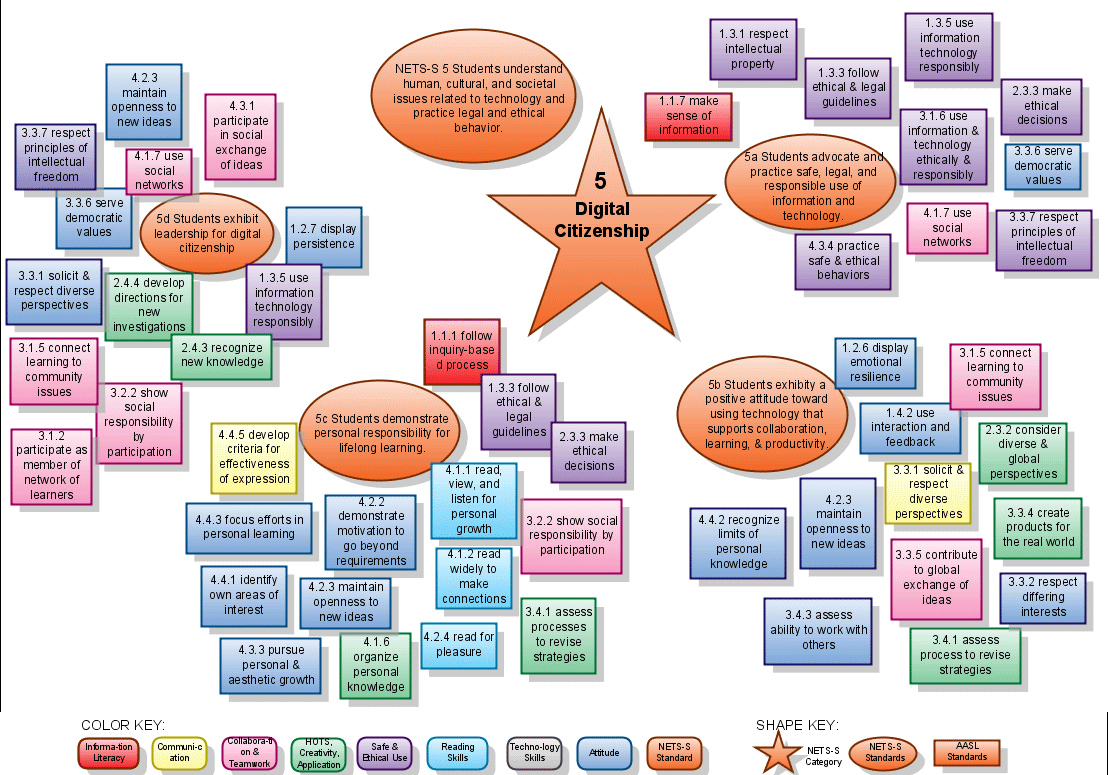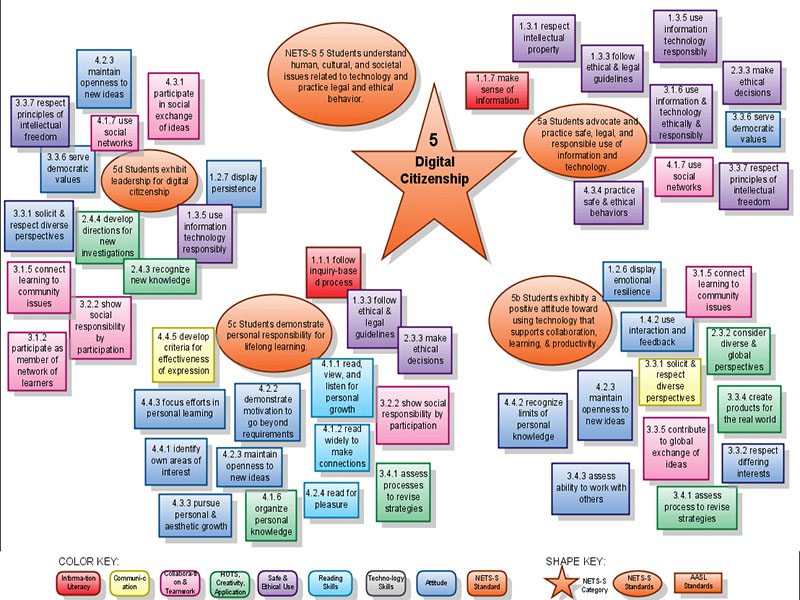
Standards For Digital Citizenship In Graphic Form
by TeachThought Staff
You’ve read a lot about digital citizenship over the years. Have you seen any useable standards for students? While not perfect, this graphic is close.
In the image, these digital citizenship standards are broken down into five categories for students, teachers, administrators, coaches, and computer science educators.
According to–well, us–the definition of digital citizenship is “The quality of habits, actions, and consumption patterns that impact the ecology of digital content and communities.”
This graphic is an attempt to bring standards to this idea–in this case, a kind of amalgamation of broader technology standards by other organizations. In that way, it’s a kind of hybrid graphic that distills tech ideas into digital citizenship ideas.
Ideas like “respecting differing interests,” “show social responsibility by participation,” and “follow an inquiry-based process” all reflect the kind of interdependent thinking that has the potential to turn connectivity to communal constructivism and, just maybe, improved digital/social capacity.
For further reading, see examples of digital citizenship.
How To Use These Standards
Generally speaking, your best bet for K-12 application probably begins with ideas for curriculum–project-based learning, for example. Think backward from a standard–you want students to demonstrate being “open to new ideas”? Design a project that requires it. Add it as a column in a rubric. Have students pitch ideas for projects.
You could also ask students for examples and non-examples of each from their own life, or even suggested improvements to those shown (which would represent a higher level of thinking at the upper end of Bloom’s Taxonomy).
Further, you could use these to inform local school policies on everything from school missions and acceptable use policies, to as source material to create guides for parents and families on digital participation.
This content is attributed under a Creative Commons 3.0 License from the simplycurious wiki; Standards For Digital Citizenship In Graphic Form
